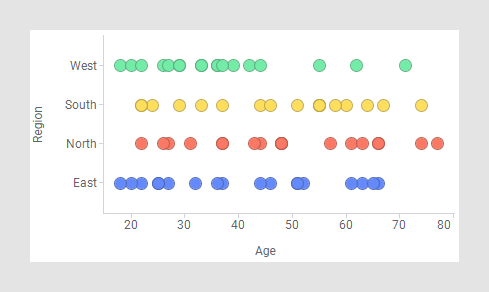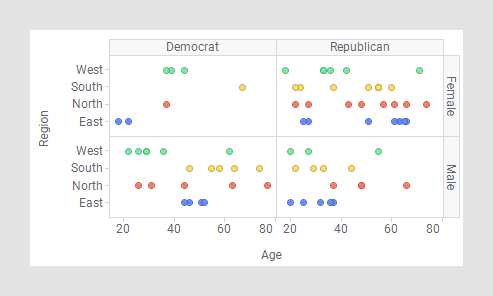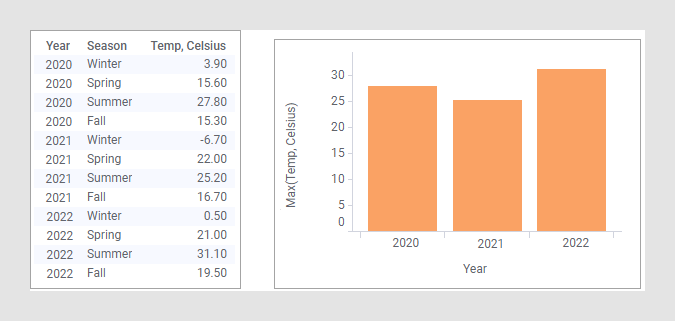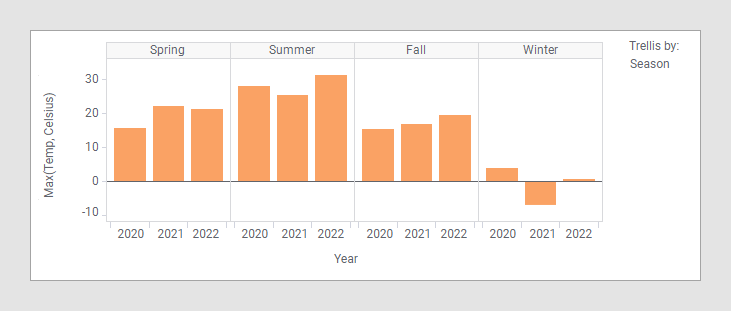Trellis
A trellised visualization is split into a number of panels, where each panel represents a subset of the data. Using trellised visualizations, you can spot similarities and differences between the subsets of data, or within the subsets.
The subsets can be defined by splitting the data into categories available in a data column, alternatively by splitting the data per data column, and then each category or column is shown in a separate panel.
For splitting data per data columns, see Visualizations trellised by data columns.
Example 1
If you choose to trellis a visualization based on the two variables "Gender" and "Political affiliation", this will result in four separate panels representing the combinations Female-Republican, Female-Democrat, Male-Republican, and Male-Democrat.
If the "Gender" variable is used in conjunction with another variable that has five different values, this will yield ten panels. From this follows that variables with a continuous distribution and a wide range of values (for example, Real values) should be binned before they are used to form a trellis visualization. Otherwise the number of panels quickly becomes unmanageable.
This is a standard non-trellised scatter plot:

By trellising this visualization based on Gender and Political affiliation, it will look like this:

Example 2


The panels above are placed horizontally, but you can also place them vertically, or evenly distributed in a matrix.
- Creating a trellised visualization
A visualization that is trellised is split into a number of panels, where each panel represents a subset of the data. - Visualizations trellised by data columns
Trellised visualizations are split into panels, where the panels display various subsets of the data table. For example, what is shown in a panel can be based on values from a specific numerical column only.